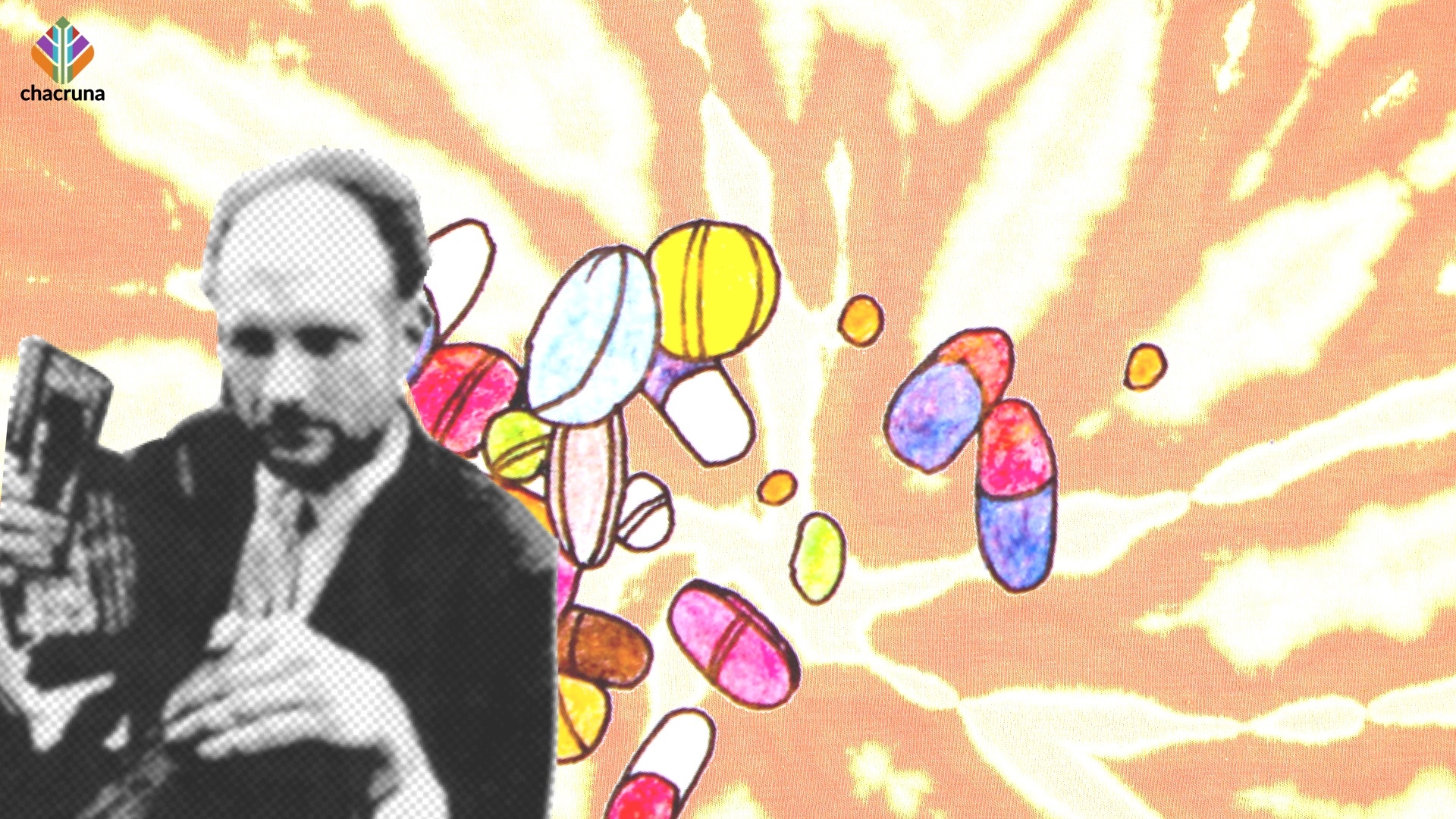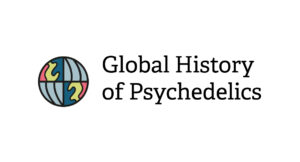When LSD-25 reached Britain, it first passed through rarefied channels of asylums, universities, research institutes, day hospitals, and night clinics, before percolating into British cultural life. The key players in the birth of its medical career in the UK are still relative unknowns when compared with figures prominently associated with the emergence of LSD in North America.
Most famously, perhaps, the Scottish psychiatrist R. D. Laing (1927–1989) used LSD in his psychoanalytic practice and at the experimental community he formed at Kingsley Hall in the east end of London in the 1960s. LSD started as an experimental psychiatric treatment in Britain following the discovery of its profound mind-altering effects. By the mid-sixties it was fueling experiments in living which often challenged traditional psychiatric authority. After the pharmacological revolution in psychiatry began in the 1950s, an “anti-psychiatric” resistance took shape in the following decade.
Farquharson is a transitional figure through whom it is possible to explore the transformation of LSD from a therapeutic tool used by psychiatrists, to a weapon of countercultural subversion turned against the psychiatric authorities.
Robin Farquharson (1930–1973), a prize-winning game theorist, former Oxbridge academic, and frequent detainee of mental hospitals, had been a resident of Kingsley Hall, and was inspired by Timothy Leary to “drop out,” leading to him becoming a key figure in the early life of patient activist groups, including People Not Psychiatry (PNP) and the first mental patients’ unions. Farquharson is a transitional figure through whom it is possible to explore the transformation of LSD from a therapeutic tool used by psychiatrists, to a weapon of countercultural subversion turned against the psychiatric authorities.
In the early 1950s Farquharson was part of a group of friends at Brasenose College, Oxford, which included Rupert Murdoch. He shared a flat with John Searle, later Professor of Philosophy at Berkeley; and also with Nigel Lawson, later Chancellor of the Exchequer in Margaret Thatcher’s Conservative government. Biographer Neil Chenoweth reveals that “Murdoch was extraordinarily close to Robin Farquharson… whose brilliance overshadowed the group,” but “what they could not work out was why.”

Shop our Collection of Psychedelic T-Shirts.
Chenoweth suggests that Farquharson’s game theory influenced Murdoch to become a “successful player in business and politics”, “the one who ignored convention and social expectations, who cut corners, who broke unwritten rules, who did what no one else in the game was prepared to do… what Rupert Murdoch would always do so well.”The supposed emancipatory potential of LSD in the context of the psychiatric system was most clearly articulated in Britain through the “acid anarchism” of Farquharson. In order to understand why LSD was so politically subversive for him and why he thought and acted as he did, it is important to consider the psychiatric and countercultural contexts in which this acid anarchism emerged.
My chapter in Expanding Mindscapes focuses on acid-inspired anarchism, shedding light on the trajectory of LSD in Britain between the 1950s and 1970s. Farquharson’s story reveals links between countercultures, “anti-psychiatry,” and the emergence of mental patient unionism in Britain. Did LSD play a part in attempts in Britain to challenge institutionalization, subvert psychiatric authority, and create alternative post-asylum spaces of sanctuary and social experimentation?
As historian Sarah Shortall suggested, “if the psychedelic drug culture has been deemed relatively insignificant, this suggests that historians have tended to accept dominant cultural narratives defining non-medical drug use as escapist or artificial, and therefore as historically and politically irrelevant.” But as Shortall recognized, “these substances tell us much about the operation of fundamental cultural distinctions—between truth and illusion, inside and outside— which organise discourses far beyond those specifically concerned with drugs.”
Whilst psychedelic science, techno-utopian microdosing, and lysergic legitimation through randomized controlled trials dominate the discourse of the psychedelic renaissance today, if the acid anarchist past is anything to go by, the new wave could yet take a more anti-establishment turn.
Whilst psychedelic science, techno-utopian microdosing, and lysergic legitimation through randomized controlled trials dominate the discourse of the psychedelic renaissance today, if the acid anarchist past is anything to go by, the new wave could yet take a more anti-establishment turn. It is true that by and large collective action by mental patients in Britain emerged independently of the activities of Laing and associates, but the direct link to that group, in the person of Robin Farquharson, illuminates the context in which psychiatry became the target of subversive subcultures of activism and how ideas of anti-psychiatry, the anti-university, and the alternative society led Farquharson to participate in practical self-organization and mutual aid with fellow mental patients.
Historians of mental patient unionism in Britain have not paid enough attention to Farquharson or his journey from academia to activism. Through an exploration of the ideas and circumstances that propelled the radical trip of Robin Farquharson, his case opens a window onto a journey towards collective action with fellow psychiatric patients, via “anti-psychiatry,” from his time at Kingsley Hall, through his experiment in dropping out and taking LSD, to his involvement in early mental patient unionism.
Note: This is an abridged version of Mark Gallagher’s chapter, “Did The Master’s Tools Dismantle the Master’s House?: Anti-Psychiatry, Robin Farquharson and Acid Anarchism,” in the edited collection, Expanding Mindscapes: A Global History of Psychedelics, released in November 2023 with MIT Press.
Art by Luana Lourenço.
Take a minute to browse our stock:
Did you enjoy reading this article?
Please support Chacruna's work by donating to us. We are an independent organization and we offer free education and advocacy for psychedelic plant medicines. We are a team of dedicated volunteers!
Can you help Chacruna advance cultural understanding around these substances?















